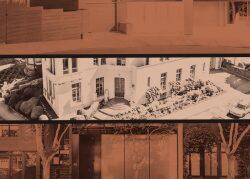The “bloodbath” bidding wars that have been the hallmark of San Francisco’s residential market for years have quickly evaporated, giving way to market-rate asks in a rapidly cooling market, according to several local agents.
The strategy of underpricing swanky San Francisco homes by half a million dollars or more began over a decade ago, said Frank Nolan of Vanguard Properties. Five years later, the tactic had proven so successful in getting frenzied buyers to bid well over the market value of a home that virtually every listing asking under $5 million was priced to create a slew of over-asking offers, he said.
“It was wild,” he said. “Almost every property had an offer date.”
Luxury listings above $5 million have always taken a more realistic pricing approach and a longer time to sell, Nolan said. That market segment is “business as usual” as far as asking strategies, though it has also had to come to terms with the down market recently, he said.
The cool-off has happened so quickly that he can no longer use comps from three to six months ago when pricing a home, Nolan added. Three weeks is far more accurate.
Underpricing was still the modus operandi for most agents outside the luxury market earlier this year, when overbidding in the city hit a four-year high. Homes sold for a median of 22 percent over asking and 70 percent closed for more than the list price in February, according to Compass data.
Only a few months later, everything has changed, agents say. Rising interest rates combined with falling tech stocks, uncertainty caused by the war in Ukraine, and a very quiet summer market as people traveled en masse for the first time since the pandemic have added up to a 20 percent price drop in July compared to the April peak, according to Compass. The data also show that over-asking prices dropped 13 points during the same period, and only 57 percent of homes closed for more than list price in July.
“The strategy of egregious underpricing will decline in popularity as the market cools,” said Compass Chief Market Analyst Patrick Carlisle, “though it has certainly become entrenched in some markets in recent years.”
No ‘bloodbath’ bidding
Compass agent Michael Bellings said that not everyone has given up on the underpricing trend. But now he sees it only on “A-plus-plus” single-family properties with everything today’s buyers are looking for: three bedrooms and two baths on one level, sizable outdoor space, turnkey condition and a location in a popular neighborhood for single-families like the Sunset or Inner Richmond. Those properties are still priced “artificially low” to create a frenzy of interest, he said, but anything else is “not going to get this bidding war bloodbath that the seller wants.”
Some sellers were initially slow to understand that the market had changed, he said, recalling one of his recent buyers who offered $100,000 over the asking price on a mid-$2 million property only to be rejected by the seller, who had assumed the home would sell for even more over asking. The buyers were so put off that they refused to come back to the table even after the price dropped later on.
“That seller totally blew it,” he said.
At this point, most sellers understand that the market has changed and would rather price the home right from the start than waste a lot of time, money and energy hoping for a bidding war that isn’t likely to happen, he added.
“You can shoot for the moon or you can cut to the chase and price for what it should be worth,” he explained. “You have a better chance of selling when the pricing is realistic than doing the death march down.”
Before the recent downturn, he would advise buyers to set their searches for 10 percent or so below their actual budgets to account for the inevitable bid up. Now, when buyers see a price it’s likely to be at or near what the seller will actually accept.
“What a concept,” he said.
Some agents said they never played the underpricing game to begin with and are glad that the practice is far less popular today. Underpricing has always been “risky,” said Sotheby’s agent Robert Callan, because it could turn off buyers and diminish the value of a property.
That is especially true in a down market where he has recently seen it “backfire,” he said, citing a recent seller who underpriced a home and then wouldn’t accept any of the offers that came in at or near asking.
“If the property was correctly priced at the beginning, I suspect they would have received a higher and acceptable offer at true market value,” he said via email.
Nolan of Vanguard said he also thought the underpricing trend was “dangerous” when it first started a decade ago, but after a while it became so prevalent he felt he had to jump on board or risk confusing buyers who at that point just assumed they had to add 10 to 20 percent to any asking price.
Though it may take years to get past the current “dip,” he said, he wouldn’t be surprised to see the practice become ubiquitous again.
“It was playing on that competitive mindset we have here,” Nolan said.
Read more


